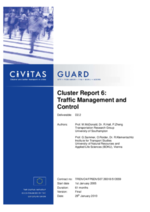Access and traffic management in the Grand Canal through ARGOS
Thematic areas
Smart, Sustainable, Connected and Shared mobility
- ITS-based enhancement of public transport
Summary
As part of a large-scale initiative in Venice to reinforce existing regulations, ensure the continuous monitoring of waterborne traffic and develop new traffic management policies, an innovative control system was installed for boats entering the Grand Canal.
Implementing sustainable mobility
Among the 150 canals of Venice, the Grand Canal (3,800 m long and between 30 and 70 m wide) represents the largest waterborne traffic artery and divides the city centre into two distinct parts. Some 30,000 boats travel daily on the Venice Lagoon and between 4,000 and 5,000 on the Grand Canal.
Like other cities, Venice faces the challenges of noise, pollution and congestion, but also has to tackle the wake pollution caused by boat traffic. With the increased boat mass and speed resulting from the use of large diesel engines, wave motion has become one of the major causes of damage to the basement structures of historical buildings in Venice since the early 1960s.
The main objective of this measure was therefore to implement an automatic control and data management system along the Grand Canal. The Automatic Remote Grand Canal Observation System (ARGOS) was designed to:
- reinforce existing city regulations regarding access and speed limits in the Grand Canal limited zone,
- enforce city regulations on other traffic management issues in the Grand Canal limited traffic zone (mooring, timetables, one-way circulation etc.); and
- provide accurate, systematic and continuous measurement of traffic density and flow, including information on the exact number, type and speed of boats navigating in the Grand Canal.
Progress
The first step was a concept design review: a thorough review of available image analysis software was carried out in collaboration with the University of Rome. The ARGOS system is based on automatic vision technologies and the processing of digital images collected by survey cells, each using special cameras. The fields of view of all the cameras are joined together in a single real-time picture of the whole waterway.
A survey was then carried out to select the most appropriate locations to install the survey cells. The 14 survey cells were installed just below the roof of several buildings leaning over the Grand Canal.
The control centre was then installed and the testing of the system was completed in November 2007. The 14 locations are connected in a network structure converging in the local police operational centre, where the information is managed and integrated with navigation control systems already in place in the city. The system provides a real-time picture of the type and position of each boat circulating in the Grand Canal. In the event of a breach of regulations, the operations centre automatically communicates the information to handheld computers used by the police.
Training for city planning officers and public security officers in using ARGOS were concluded in March 2008.
Outcomes
The continuous and automatic traffic monitoring system supports the municipal police in the reinforcement and implementation of regulations, traffic schemes and restrictions on boats navigating in the limited access zone in the Grand Canal.
There was no impact on the volume of boats passing through the Grand Canal: traffic flows showed an increase between 2005 and 2008, mainly linked to the development of water taxis circulating in the Grand Canal.
The strengthening of traffic controls led initially to an increase in the number of boats being fined, followed by a gradual decrease after August 2008. The reported trends in monthly traffic offences in 2007 and 2008 show similar patterns that follow seasonal boat traffic patterns; the high traffic offence period corresponds to the busy tourist season from May to October. However, a slight decrease in the number of traffic fines was reported from September 2008 in comparison to 2007, with drop of around 28 percent.
The measure was successful in improving traffic management policy due to strong political support, as well as support from the municipal police and the city authorities.








